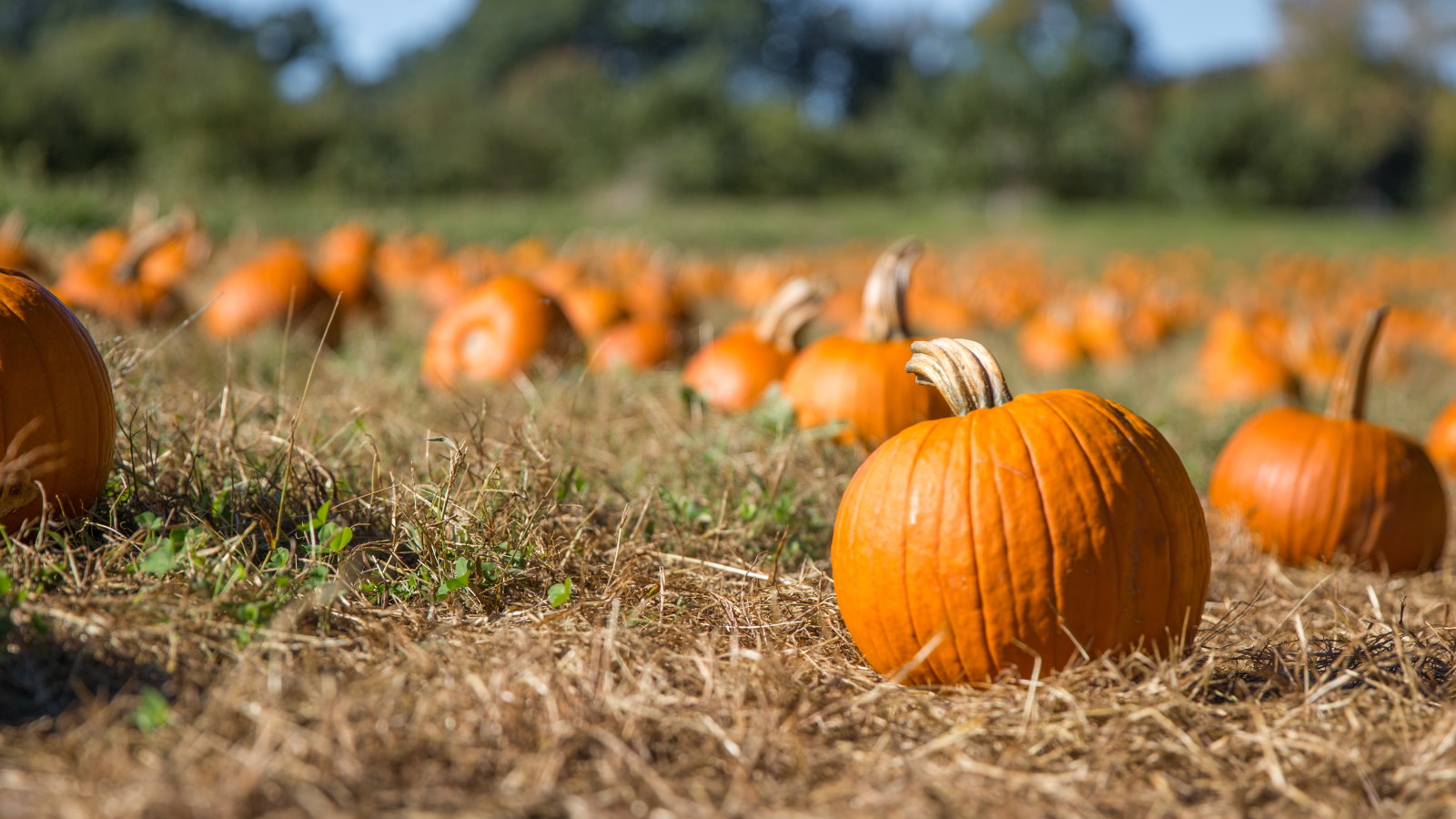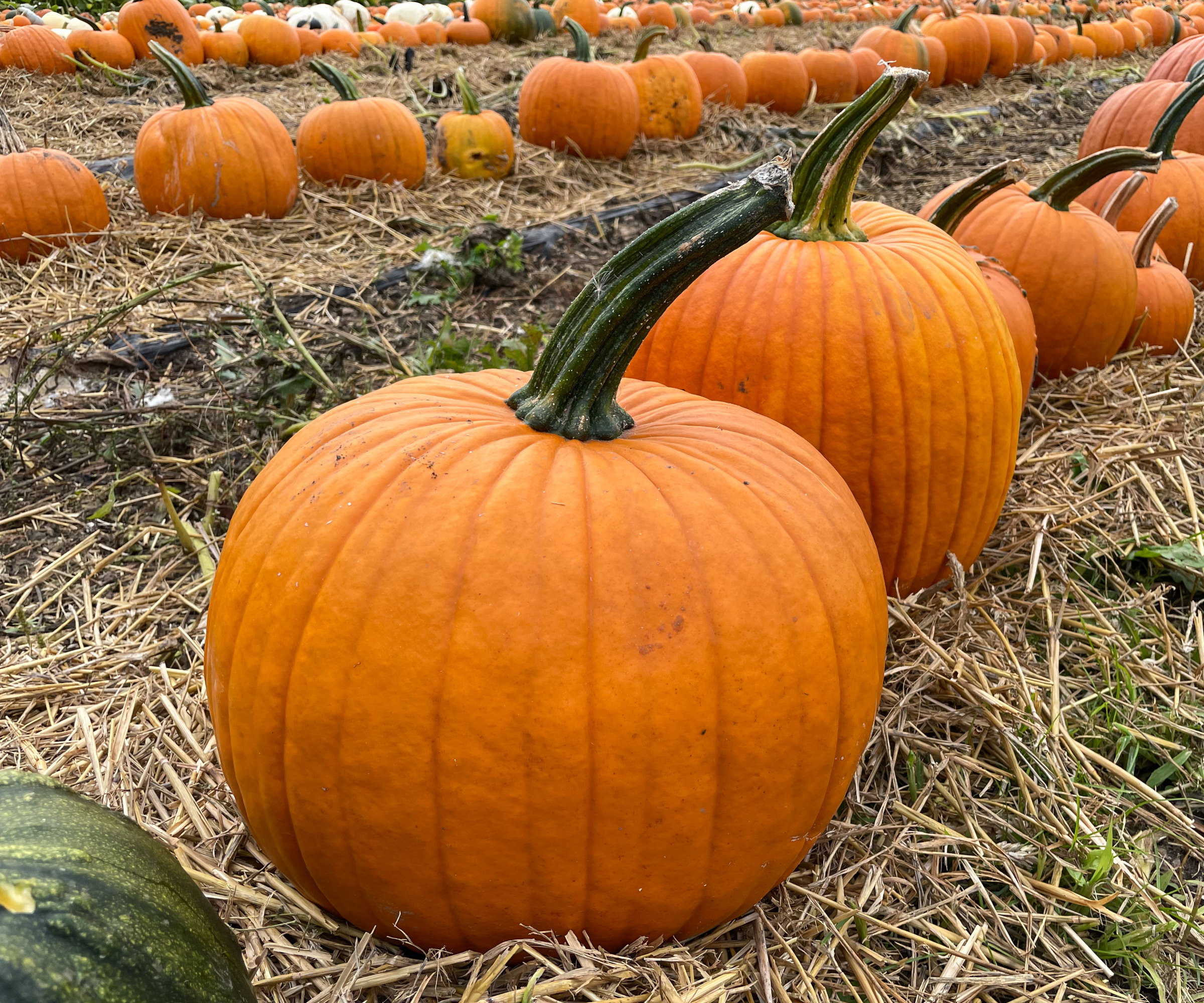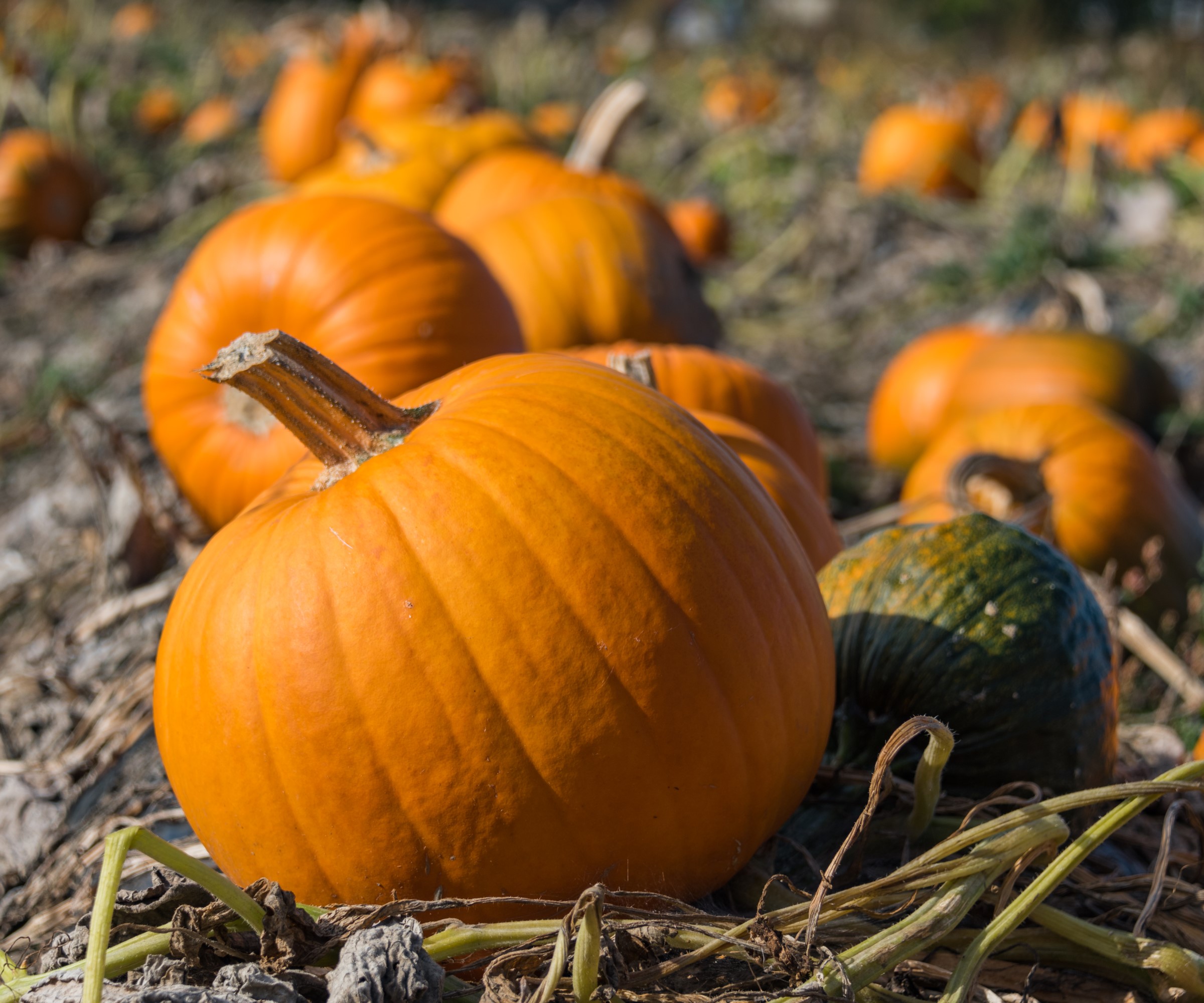
Knowing how to cure pumpkins gives homegrown fruits the longest life. Whatever you grow pumpkins for, from carving to decorating to cooking, a properly cured pumpkin can be good for months and won’t rot within weeks of picking.
Growing pumpkins is a long process, yet an immensely satisfying one. From that moment you plant pumpkins through all the months watching them develop long vines and fruits to when you harvest the pumpkins themselves - all thoroughly enjoyable. When you pick them, it is then time to cure pumpkins.
Often overlooked in importance, knowing how to cure pumpkins is an essential part of growing them. I grew hundreds of pumpkins in vegetable gardens I worked in and curing them properly gave each the longest lifespan. Whether the pumpkins were put on display, sold to garden visitors, or used by the chefs, curing them was crucial.

Do pumpkins need to cure?
You cure pumpkins to enhance the flavor and ensure they can be stored for as long as possible. Knowing how to cure pumpkins means they can last for months and won’t rot in storage. As well as pumpkins, curing the fruits is important when you harvest winter squash.
How to cure pumpkins after picking

The process of curing pumpkins and winter squash hardens the rinds to protect the fruit from decay - this is why a well-cured pumpkin can be kept stored well into winter. The sugars in the fruit also concentrate during the curing process, making the pumpkin taste even sweeter.
So, how long do pumpkins need to cure? The answer is that the time can depend on the size. If you grow a giant pumpkin, it may take longer than an average pumpkin or winter squash. In general, it takes 7-14 days to cure pumpkins and the task can be done outdoors in the vegetable garden or indoors.
When you pick a pumpkin off the vine it is important to use clean and sharp pruning shears and leave a few inches of stem attached to the pumpkin, which aids curing and storage. Any damage to where the stem meets the pumpkin can start the rotting process, so it would be a vegetable harvesting mistake to carry the fruit by that handle - which can cause the stem to snap off.
To cure pumpkins properly, the fruits need a week or two after being cut from the vine in a sunny spot at 80-85°F temperatures. This can be done outside in the vegetable garden, however, if low temperatures or rainfall are predicted, pumpkins can also be cured in a greenhouse, sun room, or on a sunny windowsill. If you choose to cure pumpkins outside, protect the fruits from cold or frosty nights by covering them or moving them ahead of the temperatures dropping.
When I harvested pumpkins in the UK, where the fall weather was unpredictable, to say the least, I cured pumpkins and squashes in an unheated greenhouse or polytunnel - where they were warm, it was well-ventilated, and the fruits were protected from wet weather.
Space out the pumpkins and winter squashes, making sure they are not touching and there is good air circulation between the fruits. The fruits should ideally be lifted off the floor, and raised on shelves or racks.
Place the pumpkins on newspaper, cardboard, or straw if you cannot lift them off the floor onto racks. This is advisable over sitting the fruits directly on a wet floor, which can cause rot. Keep an eye for any signs of rot or the fruits going soft - and remove any afflicted pumpkins. You can rotate the pumpkins during the curing process.
Once cured, store the pumpkins in a cool and dry place at a temperature of 50-60°F and they should be good for up to three months.
A four-shelf unit where the weight limit for each shelf is 250 pounds. Ideal for a wide range of storage solutions, including curing pumpkins to raise fruits off the ground and provide air circulation.
FAQs
Can you eat pumpkin without curing?
Yes, pumpkins can be eaten straight away after being picked. Curing pumpkins is essential if you want to store the pumpkins for longer than a week rather than use them immediately. While the flavor will develop during the curing process, it can be used in cooking without being cured.
Many homeowners choose to decorate with pumpkins over the Halloween period. While whole pumpkins can store for months, carved pumpkins unfortunately don’t have a long shelf life after being cut. However, there are many things you can do with leftover Halloween pumpkins, including cooking them or adding them to your pile to make compost.







